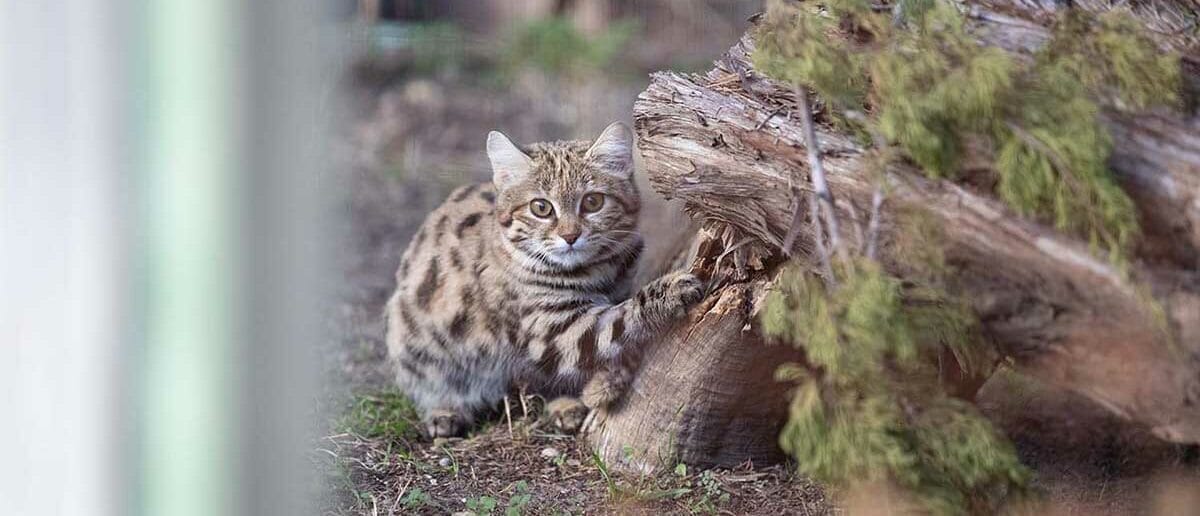When it comes to publicity, Fossil Rim gets a lot of help from its largest residents. Giraffe, rhino and antelope can dominate the scene during your visit, but this year some of our tiniest, most elusive residents are stepping into the spotlight.
Black-footed cats (BFCs) are some of the smallest felines in the world, but their hunting prowess and bold attitude far exceed their size. Considered a vulnerable species, their native habitat is shrinking, and they are often victims of methods used to control larger predators, like traps and poison. Conservation efforts began in the mid to late 20th century, and in 2014, Fossil Rim received our first two individuals. Working with what is today known as the Black-Footed Cat Consortium, we breed genetically compatible individuals in the hopes of building a strong population in human care. This population can then be used to bolster wild numbers through things like research, awareness and more.

Naia’s Big Birthday
We currently house six black-footed cats, but one in particular is making hiss-tory this year. In February, she turned 18, making her the oldest known BFC currently in human care. If she continues to thrive, she will soon reach the status of oldest recorded BFC in history. Naia, who was born at Riverbanks Zoo in South Carolina, came to us as a potential member of our breeding program. However, she never had a successful litter of kittens, and didn’t seem drawn to motherhood. After some deliberation, she was removed from the breeding program, though she remains at Fossil Rim as a non-breeding resident. She moved from her enclosure in the Intensive Management Area to Animal Discoveries, where she is now one of two female BFCs that can occasionally be viewed by the public.

Caring for Our Wild Cats
It is not uncommon for individual animals to live longer in human care than they would in the wild, thanks to their access to better nutrition and regular vet care. Still, an animal making it to their elderly years is cause for celebration, as it tells us that we’re doing something right. Looking back on their lives gives us insights into the best practices to use when caring for them. Amanda Collins, Fossil Rim’s Carnivore Curator, believes that there is a combination of factors to thank for Naia’s milestone.
“Here at Fossil Rim we are able to house BFC in large naturalistic enclosures so that they can display natural behaviors with minimal stress and have a life similar to that in the wild,” she says.
Of course, our cats still require veterinary care, good nutrition, enrichment and more. Although Fossil Rim has now contributed to this knowledge base, we would never have been able to begin if not for the hundreds of other conservationists dedicated to learning more about the species.

“Our wealth of knowledge in the BFC program allows for a close network of animal care professionals to share information, and ensure that we are all staying up to date on the latest happenings of this species,” Amanda says.
Naia is an important part of her species’ conservation success story, not just because of her personal achievement, but because the US population of black-footed cats is one of the only ones that exists outside of their native southern Africa. If the wild population continues to decline, the cats in human care will be the only ones left to combat the trend.
Amanda hopes that Naia and her fellow celebrity cats, like Gaia, the online sensation who was born at Fossil Rim, will help bring awareness to the plight of the species.
“Black-footed cats are not well known to the general public,” says Amanda. “We hope to create more awareness of their small and spicy personalities to garner more interest from other zoological facilities to house them.”
We’re grateful to have been a part of Naia’s life for so many years, and hope that her legacy will continue to inspire conservationists both here in Texas and beyond.

